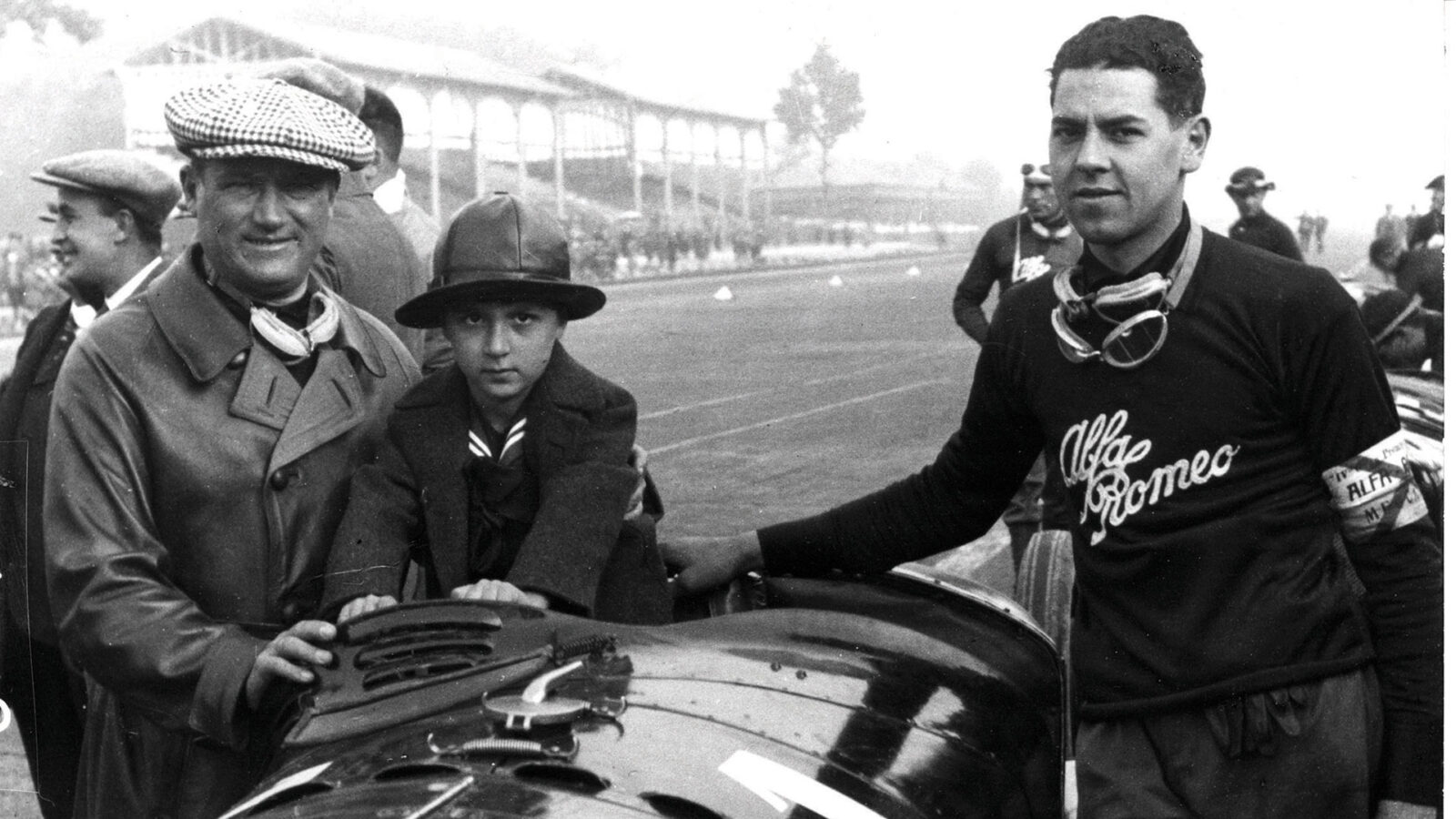The tragedy of Antonio Ascari — killed at track he’d said was a safety risk
The spectacular Antonio Ascari died 100 years ago, writes Doug Nye. He was the Gilles Villeneuve of his era until the fateful 1925 French GP

From left: Antonio Ascari, son Alberto, age six, and Alfa mechanic Giulio Ramponi, Monza, 1924
Spitzley-Zagari Archive
In this year of significant anniversaries – 75 years of the Formula 1 World Championship (NB – NOT as the marketeers would like us to believe “of Formula 1”, which has been around for two years longer), 80 years since VE Day, and of course also 80 years since importation to Britain of the first postwar banana consignment, there is another notable motor sporting centenary worth marking.
On July 26 it is 100 years since the great Italian champion driver Antonio Ascari – father of 1952-53 FIA World Champion Alberto – lost his life when leading the 1925 Grand Prix de l’ACF (aka the ‘French Grand Prix’) at Montlhéry Autodrome.
Ascari Sr had been the most capable and fastest racing driver of those early ’tween-war times. Like so many great Italian hard chargers he’d had a hard-handed mechanical background. Born in 1888, he was the son of a rural corn merchant, from the village of Moratica, some 17 miles south of Verona and barely a mile east of Tazio Nuvolari’s boyhood home at Castel d’Ario.
“The Alfa P2s dominated the 1925 Belgian GP, 1-2 – Ascari winning”
In his teens Ascari landed a job as a mechanic with the small De Vecchi company in Milan, where he met and became friends with three-years older Ugo Sivocci. In 1909 he went with his brother Amedeo to Brazil, helping build a railway, only for his brother to die of yellow fever. Back in Italy by 1911, it was upon Sivocci’s recommendation that Ascari made his debut as a competition driver, handling a touring De Vecchi in a modest Modenese regularity trial.
But it was after working for the Falco aircraft company during WW1 that Ascari began to compete seriously. He raised the funds to launch a small car dealership of his own in Milan. Keen to promote it, when Fiat entered but then withdrew one of its 1914 Grand Prix cars in the imminent 35-mile Parma-Poggio di Berceto hillclimb – a big deal within Italy – he promptly bought the car and won outright.
Another major hillclimb win followed for him in the Fiat at Consuma, before he tackled the Targa Florio road race in Sicily that November and crashed. But his spectacular driving and engaging ‘can do’ personality attracted Alfa Romeo, who not only engaged him as a works driver but also made him its sales concessionaire for Lombardy. It was with Alfa Romeo – where he rejoined chief tester Sivocci – that Ascari built his public stature.
He won his first big race at Cremona in 1923. Company owner Nicola Romeo sought sales promotion through racing, but Alfa’s first Grand Prix car design, the P1, proved inadequate. In pre-Italian GP testing at Monza, Sivocci crashed his, fatally. His young friend and new Alfa employee Enzo Ferrari took charge of the accident scene. Ascari was impressed, and in many ways took the 10-years-younger Ferrari under his wing advising on race driving and business. Ferrari admired and respected Ascari immensely.
After winning at Cremona 1923-24, leading the mighty French GP at Lyon, then winning the ’24 Italian GP at Monza, Ascari had legions of fans, not least after the press revealed that Monza organiser Arturo Mercanti had warned Alfa that “…the driver would be unwelcome there unless he moderated his impetuous style and stopped cornering dangerously”. Ascari took little notice. Here was a Gilles Villeneuve. The tifosi loved that.
Into 1925, the works Alfa P2s dominated the year’s Belgian GP, 1-2 – Ascari winning from his team-mate and friend Giuseppe Campari. The French GP followed at the new Linas-Montlhéry circuit. During practice Ascari had complained about the “dangerous” paling fences flanking the fast circuit. Home stars Robert Benoist and Albert Divo of Delage praised them. Ascari was also reportedly unhappy when Nicola Romeo told him that Campari should win this one. Ascari had no problem with his roly-poly, opera-singing mate, but felt let down by Romeo.
From the rolling start he exploded into the lead from the second row. He and Campari drew away from the rest of the field. But this was an enormously long 80-lap race – 7.7 miles per lap – 621 miles (1000km) overall. The twin Alfas’ pace shook seasoned onlookers. Near the 2hr mark Ascari had his car’s rear tyres changed in a pitstop, rejoining without losing his lead – and storming on. Light drizzle began. The experienced Charles Faroux reported in L’Auto that for his last three laps several trackside observers – including André Boillot and Albert Guyot – thought Ascari’s driving increasingly ragged. Faroux attributed Ascari’s problem to “muscular fatigue”.
Then on lap 23, as he entered the fast left-hander leading to the water tower on the course’s return leg towards the Autodrome speedbowl, Ascari’s Alfa slid tail-out at over 100mph, and hooked its left-front wheel into the apex fencing. That spun the car broadside, it overturned, throwing out its driver, then rolling over him. The car ended up mid-track from where it was hastily rolled into the inside ditch. A Mr Thalmann, director of Sandvik, was first to reach Ascari, joined by Boillot, marshals and soldiers. Ascari had sustained an open skull fracture, his left leg was crushed, and almost severed. Medical help was slow arriving. He died en route to hospital. Romeo withdrew his surviving team cars, leaving the race win to Benoist/Divo. Fittingly, after being presented with their laurels, they laid them at the site of Ascari’s accident.
